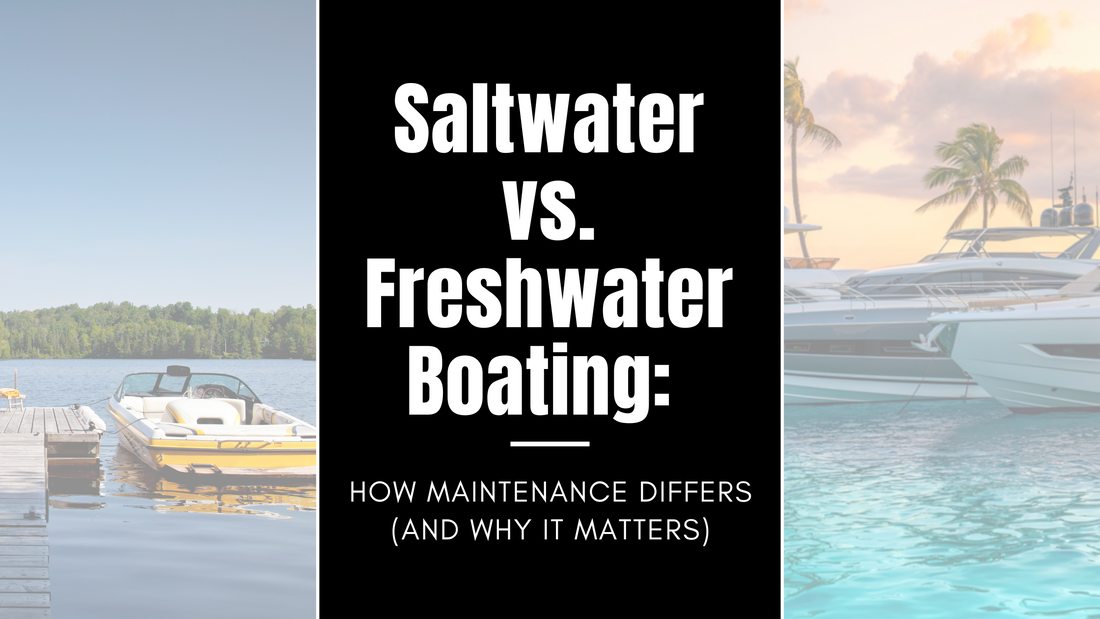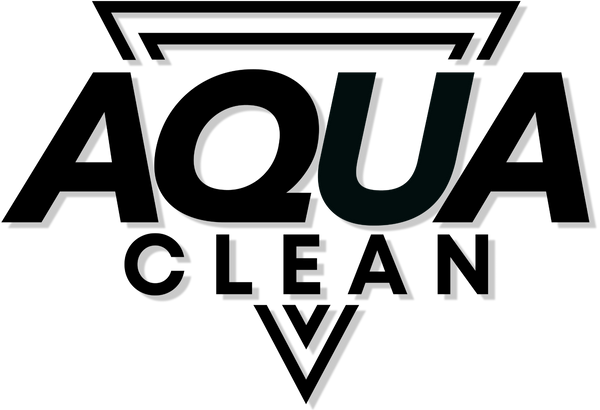
Saltwater vs. Freshwater Boating: How Maintenance Differs (and Why It Matters)
Share
Boating is one of life’s great joys, whether you’re gliding across a calm lake or cutting through ocean waves. But not all water is the same, and the type of water you boat in—saltwater or freshwater—makes a big difference in how you maintain your vessel. Understanding these differences can save you time, money, and frustration while keeping your boat looking and performing its best.
1. Corrosion and Rust
Saltwater is notorious for corrosion. It attacks metal fittings, fasteners, and even electrical components, making routine care essential. Freshwater is much gentler, but minerals and hard water can still leave buildup over time.
Saltwater vs. Freshwater:
-
Saltwater: After every outing, use AquaClean Salt Wash to remove harmful salt deposits. Follow up with Protect to add a long-lasting layer of defense against corrosion and UV damage.
-
Freshwater: While corrosion is less of a concern, regular cleaning with Foam+, a ceramic-infused, pH-neutral soap, helps prevent mineral buildup and keeps protective coatings intact.
2. Hull and Surface Care
Your hull takes the brunt of exposure to the elements. Salt can leave a gritty residue that scratches gelcoat, while freshwater boats often face algae, tannins, and scum lines.
Saltwater vs. Freshwater:
-
Saltwater: Wipe surfaces with Wipedown to restore shine and maintain a slick finish that resists future grime. Finish with Protect to keep surfaces smooth and protected.
-
Freshwater: Clean with Foam+ to lift dirt and stains, then follow with Wipedown for a glossy, easy-to-maintain surface that resists algae and hard-water marks.
3. Deck and Exterior Hardware Care
Rails, cleats, and other hardware take a beating from sun, water, and general wear. Saltwater accelerates corrosion and leaves residue, while freshwater can still cause mineral buildup or dulling over time.
Saltwater vs. Freshwater:
-
Saltwater: Rinse and clean with AquaClean Salt Wash to remove salt deposits, then use Protect to add a long-lasting barrier against corrosion and UV damage.
-
Freshwater: Even though corrosion is less severe, gently clean with Foam+ and protect with Protect to keep metals shiny, smooth, and easier to maintain.
4. Interior and Upholstery
Interior surfaces need attention to remain comfortable and durable. Salt spray can dry out vinyl and fabrics, whereas freshwater environments often encourage mold, mildew, and odors.
Saltwater vs. Freshwater:
-
Saltwater: Clean interior surfaces with APC to remove grime, then protect and condition with Interior to keep vinyl and leather supple and UV-protected.
-
Freshwater: APC and Interior work just as well to combat dirt, algae, and odors while conditioning surfaces for long-term protection.
Summary
Saltwater and freshwater each present unique maintenance challenges, but the right routine and products make care easier and more effective. Salt Wash and Protect combat saltwater corrosion, while Foam+, Wipedown, and Interior keep all surfaces clean, conditioned, and protected, no matter the environment. Tailoring your maintenance routine to the water you boat in ensures your vessel stays beautiful, functional, and ready for adventure all season long.
Closing CTA
Boating should be fun, not a chore. Ready to keep your boat looking its best? Shop the AquaClean lineup for products designed for both saltwater and freshwater boating.
Quick Product Recommendations
For Saltwater Boats:
-
Salt Wash: Removes salt deposits to prevent corrosion.
-
Protect: Long-lasting barrier against UV and salt damage.
-
Wipedown: Restores shine and keeps surfaces slick.
-
Foam+: Ceramic-infused, pH-neutral soap for safe, effective cleaning.
-
Interior: Conditions vinyl, leather, and plastics while protecting against salt and sun.
For Freshwater Boats:
-
Foam+: Lifts dirt and grime safely while preserving coatings.
-
Wipedown: Maintains glossy, smooth surfaces and protects against algae and tannins.
-
Protect: Shields metal fittings and hardware from discoloration and buildup.
-
APC: Tackles tough stains and interior messes.
-
Interior: Cleans, conditions, and protects against UV and odors.
